How to cite this page Comment citer cette page
Items
In item set
People
-
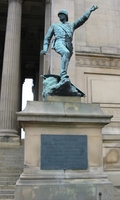 Earle, William British soldier (1833-1885) who fought in the Crimean War and East Africa. Earle came from a Liverpool family with deep ties to slave-ownership and slave-trading. Earle married Mary Codrington, who also came from a family closely involved in British slavery.
Earle, William British soldier (1833-1885) who fought in the Crimean War and East Africa. Earle came from a Liverpool family with deep ties to slave-ownership and slave-trading. Earle married Mary Codrington, who also came from a family closely involved in British slavery. -
 Eboué, Félix Administrateur des colonies d'origine guyanaise. Petit-fils d’esclave, il est diplômé de l’Ecole coloniale de Paris et fait une carrière d’administrateur, puis de gouverneur colonial. Il est gouverneur de la Guadeloupe de 1936 à 1938. En poste au Tchad en juillet 1940, il se rallie à Charles de Gaulle. Il meurt en 1944 au Caire. Il entre au Panthéon en 1949, en même temps que Victor Schoelcher.
Eboué, Félix Administrateur des colonies d'origine guyanaise. Petit-fils d’esclave, il est diplômé de l’Ecole coloniale de Paris et fait une carrière d’administrateur, puis de gouverneur colonial. Il est gouverneur de la Guadeloupe de 1936 à 1938. En poste au Tchad en juillet 1940, il se rallie à Charles de Gaulle. Il meurt en 1944 au Caire. Il entre au Panthéon en 1949, en même temps que Victor Schoelcher. -
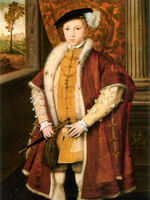 Edward VI King of England (1547-1553)
Edward VI King of England (1547-1553) -
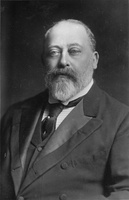 Edward VII King of the United Kingdom and the British Dominions, and Emperor of India from 1901 to 1910
Edward VII King of the United Kingdom and the British Dominions, and Emperor of India from 1901 to 1910 -
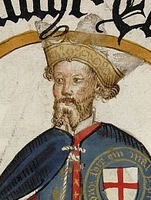 Edward, the Black Prince Eldest son and heir apparent of King Edward III of England. Although Edward obviously predates the British Empire, his nickname "The Black Prince" (an appellation whose origins are uncertain) raises interesting questions about the meanings of blackness in fourteenth century Europe, or indeed how ideas of blackness have been reconfigured in the present. His equestrian statue in Leeds was also dedicated as a tribute to Edward VII, who was King of the United Kingdom and the British Dominions, and Emperor of India, from 1901 until 1910.
Edward, the Black Prince Eldest son and heir apparent of King Edward III of England. Although Edward obviously predates the British Empire, his nickname "The Black Prince" (an appellation whose origins are uncertain) raises interesting questions about the meanings of blackness in fourteenth century Europe, or indeed how ideas of blackness have been reconfigured in the present. His equestrian statue in Leeds was also dedicated as a tribute to Edward VII, who was King of the United Kingdom and the British Dominions, and Emperor of India, from 1901 until 1910. -
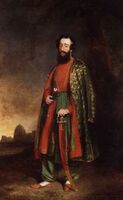 Edwardes, Herbert Benjamin British colonial administrator and soldier in India in the nineteenth century.
Edwardes, Herbert Benjamin British colonial administrator and soldier in India in the nineteenth century. -
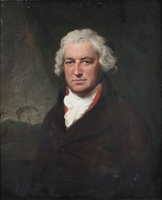 Edwards, Bryan English politician, historian, and major slave-owner of several estates in Jamaica in the eighteenth century. Edwards was one of the leading opponents against the abolition of the slave-trade in Britain. As Secretary of the African Association, Edwards helped to edit and publish Mungo Park's narrative of his 1795-1797 expedition to West Africa
Edwards, Bryan English politician, historian, and major slave-owner of several estates in Jamaica in the eighteenth century. Edwards was one of the leading opponents against the abolition of the slave-trade in Britain. As Secretary of the African Association, Edwards helped to edit and publish Mungo Park's narrative of his 1795-1797 expedition to West Africa -
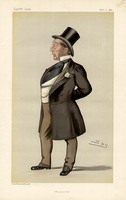 Edwards, Henry British Liberal politician and linseed merchant in the nineteenth century. His life showcases the inevitable imperial connections of the British elite of the Victorian period. He participated in the Crimean war; was present in the coronation of Russian Czars; was among the first to sail through the Suez canal, whose financing and later debt-servicing landed Egypt into a semi-colonial state; he also rode the newly Northern Pacific Railway, which served as a powerful tool of settler expansionism and disrupted Native American Communities. In Parliament, however, Edwards's interventions were principally around local concerns.
Edwards, Henry British Liberal politician and linseed merchant in the nineteenth century. His life showcases the inevitable imperial connections of the British elite of the Victorian period. He participated in the Crimean war; was present in the coronation of Russian Czars; was among the first to sail through the Suez canal, whose financing and later debt-servicing landed Egypt into a semi-colonial state; he also rode the newly Northern Pacific Railway, which served as a powerful tool of settler expansionism and disrupted Native American Communities. In Parliament, however, Edwards's interventions were principally around local concerns. -
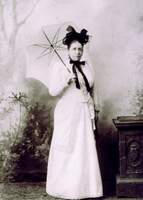 Elder, Isabella Scottish philanthropist in the nineteenth century, whose wealth largely derived from imperial shipbuilding. Her husband was the shipbuilder John Elder (1824-1869), whose firm was was actively involved in supporting Britain's naval empire and imperial commerce. Some of the company's clients included the African Mail Company and the African Steamship Company. Isabella briefly took over management of the company upon John's death in 1869, before selling the company to her brother John Francis Ure (1820-1883), J. L. K. Jamieson (1826-1883) and William Pearce (1833-1888).
Elder, Isabella Scottish philanthropist in the nineteenth century, whose wealth largely derived from imperial shipbuilding. Her husband was the shipbuilder John Elder (1824-1869), whose firm was was actively involved in supporting Britain's naval empire and imperial commerce. Some of the company's clients included the African Mail Company and the African Steamship Company. Isabella briefly took over management of the company upon John's death in 1869, before selling the company to her brother John Francis Ure (1820-1883), J. L. K. Jamieson (1826-1883) and William Pearce (1833-1888). -
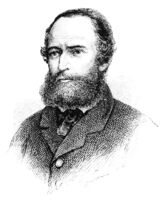 Elder, John Scottish shipbuilder in the nineteenth century. In 1852, John Elder joined the firm of Randolph, Elliott, & Co., which was initially involved in building ship engines before expanding to constructing actual ships from the 1860s. Elder became the sole partner in the company from 1868 and renamed the firm John Elder & Co the following year. His wife Isabella Elder (1828-1905) then briefly took over management of the company upon John's death in 1869. The Elders' shipbuilding firm was actively involved in supporting Britain's naval empire and imperial commerce throughout the nineteenth century. Some of the company's clients included the African Mail Company and the African Steamship Company, the latter of which was absorbed into Elder, Dempster and Co. in 1891.
Elder, John Scottish shipbuilder in the nineteenth century. In 1852, John Elder joined the firm of Randolph, Elliott, & Co., which was initially involved in building ship engines before expanding to constructing actual ships from the 1860s. Elder became the sole partner in the company from 1868 and renamed the firm John Elder & Co the following year. His wife Isabella Elder (1828-1905) then briefly took over management of the company upon John's death in 1869. The Elders' shipbuilding firm was actively involved in supporting Britain's naval empire and imperial commerce throughout the nineteenth century. Some of the company's clients included the African Mail Company and the African Steamship Company, the latter of which was absorbed into Elder, Dempster and Co. in 1891. -
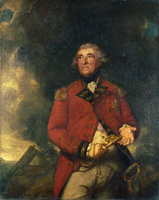 Eliott, George Augustus British army officer in the eighteenth century. Eliott served as Governor of Londonderry (1774-1775) and Governor of Gibraltar (1777-1790).
Eliott, George Augustus British army officer in the eighteenth century. Eliott served as Governor of Londonderry (1774-1775) and Governor of Gibraltar (1777-1790). -
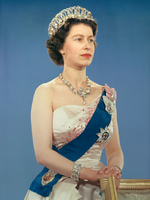 Elizabeth II Queen of the United Kingdom and other Commonwealth realms from 1952 to 2022.
Elizabeth II Queen of the United Kingdom and other Commonwealth realms from 1952 to 2022. -
Elphick, Nick Sculptor in the twenty-first century.
-
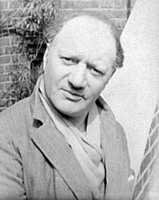 Epstein, Jacob American-born British sculptor active in the twentieth century
Epstein, Jacob American-born British sculptor active in the twentieth century -
Etcheto, Jean-François Spanish sculptor in the nineteenth century.
-
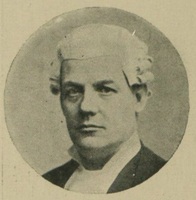 Eve, Harry Trelawney Member of Parliament for Ashburton (1904-1907) and the son of a Jamaican merchant.
Eve, Harry Trelawney Member of Parliament for Ashburton (1904-1907) and the son of a Jamaican merchant. -
Fagel, Léon French sculptor in the nineteenth and early twentieth centuries.
-
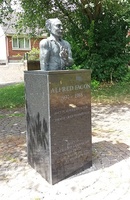 Fagon, Alfred Black British poet, playwright and actor in the twentieth century.
Fagon, Alfred Black British poet, playwright and actor in the twentieth century. -
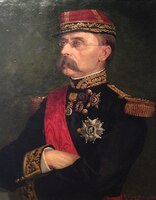 Faidherbe, Louis Léon César Louis Faidherbe was a military officer appointed governor of Senegal from 1854 to 1861 and from 1863 to 1865, thanks to his close ties with the Bordeaux trading houses, whose activities he supported to the detriment of those of the Métis families settled in Saint-Louis. His actions were threefold: he pursued a violent military policy aimed at establishing the French as the dominant power in the Senegal River valley; he took administrative action to organize the colonial state in Senegal; and he played an active part in the production of colonial ethnographic knowledge of Africa based on the notion of "race". After his return from Senegal, he was appointed general commanding the Bône subdivision in Algeria in 1867. Present in France on convalescent leave in 1870, he was appointed Commander-in-Chief of the Armée du Nord on December 3, 1870, and won the battles of Pont-Noyelles (December 23-24, 1870) and Bapaume (January 3, 1871). From 1871, he embarked on a political career in the Republican ranks.
Faidherbe, Louis Léon César Louis Faidherbe was a military officer appointed governor of Senegal from 1854 to 1861 and from 1863 to 1865, thanks to his close ties with the Bordeaux trading houses, whose activities he supported to the detriment of those of the Métis families settled in Saint-Louis. His actions were threefold: he pursued a violent military policy aimed at establishing the French as the dominant power in the Senegal River valley; he took administrative action to organize the colonial state in Senegal; and he played an active part in the production of colonial ethnographic knowledge of Africa based on the notion of "race". After his return from Senegal, he was appointed general commanding the Bône subdivision in Algeria in 1867. Present in France on convalescent leave in 1870, he was appointed Commander-in-Chief of the Armée du Nord on December 3, 1870, and won the battles of Pont-Noyelles (December 23-24, 1870) and Bapaume (January 3, 1871). From 1871, he embarked on a political career in the Republican ranks. -
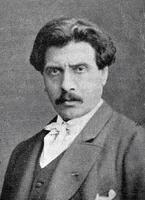 Falguière, Alexandre French sculptor in the nineteenth century.
Falguière, Alexandre French sculptor in the nineteenth century. -
Farrell, Terrence Irish sculptor active in the nineteenth century.
-
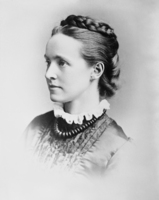 Fawcett, Millicent English suffragist and writer in the nineteenth and twentieth centuries. During the Second Boer War, Fawcett headed the Fawcett Commission, alongside Anne Knox, Jane Waterston, Ella Scarlet, Katherine Brereton and Lucy Deane, which was sent by the government on a four-month tour in the summer of 1901 to investigate the conditions of British concentration camps in South Africa, in response to a prior independent investigation carried out by Emily Hobhouse which had been highly critical of the camps.
Fawcett, Millicent English suffragist and writer in the nineteenth and twentieth centuries. During the Second Boer War, Fawcett headed the Fawcett Commission, alongside Anne Knox, Jane Waterston, Ella Scarlet, Katherine Brereton and Lucy Deane, which was sent by the government on a four-month tour in the summer of 1901 to investigate the conditions of British concentration camps in South Africa, in response to a prior independent investigation carried out by Emily Hobhouse which had been highly critical of the camps. -
Fehr, Henry Charles British sculptor active in the late nineteenth and early twentieth centuries.
-
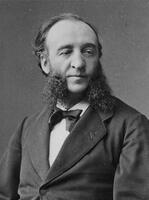 Ferry, Jules Prime Minister of France (1880-1881; 1883-1885) during the Sino-French War of 1884-1885. Ferry was forced to resign during the infamous Tonkin Affair of 1885.
Ferry, Jules Prime Minister of France (1880-1881; 1883-1885) during the Sino-French War of 1884-1885. Ferry was forced to resign during the infamous Tonkin Affair of 1885. -
Feuchère, Jean-Jacques French sculptor in the nineteenth century.
-
Fichet, Fred French sculptor based in New Caledonia/Kanaky
-
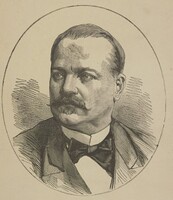 Flatters, Paul François Xavier French soldier and colonial explorer in North Africa in the nineteenth century.
Flatters, Paul François Xavier French soldier and colonial explorer in North Africa in the nineteenth century. -
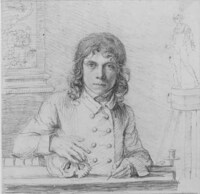 Flaxman, John British sculptor in the eighteenth and nineteenth centuries. Flaxman produced several colonial statues in his lifetime, including a statue of Lt. Gen. Sir John Moore in Glasgow and two statues of Warren Hastings for Whitehall and India. Some of his most notable works, however, were funerary monuments, many of which were produced for individuals involved in transatlantic slavery and colonialism. Examples include the monument to Sir Simon Clarke in Hanover Parish Church, Jamaica, the monument to William Miles in Ledbury Church, Herefordshire, and two monuments to John Brathwaite in St Martin's Church, Epsom and St Michael’s Parish Church, Barbados.
Flaxman, John British sculptor in the eighteenth and nineteenth centuries. Flaxman produced several colonial statues in his lifetime, including a statue of Lt. Gen. Sir John Moore in Glasgow and two statues of Warren Hastings for Whitehall and India. Some of his most notable works, however, were funerary monuments, many of which were produced for individuals involved in transatlantic slavery and colonialism. Examples include the monument to Sir Simon Clarke in Hanover Parish Church, Jamaica, the monument to William Miles in Ledbury Church, Herefordshire, and two monuments to John Brathwaite in St Martin's Church, Epsom and St Michael’s Parish Church, Barbados. -
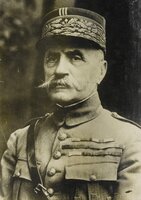 Foch, Ferdinand French general, Marshal of France, and Supreme Allied Commander from 1918 until 1920.
Foch, Ferdinand French general, Marshal of France, and Supreme Allied Commander from 1918 until 1920. -
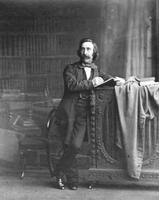 Foley, John Henry Irish sculptor in the nineteenth century. Some of his notable colonial works include the equestrian statue of James Outram in Kolkata, the statue of Colin Campbell in Glasgow, and the equestrian statue of Henry Hardinge, which was originally installed in Kolkata but was later repatriated to the UK.
Foley, John Henry Irish sculptor in the nineteenth century. Some of his notable colonial works include the equestrian statue of James Outram in Kolkata, the statue of Colin Campbell in Glasgow, and the equestrian statue of Henry Hardinge, which was originally installed in Kolkata but was later repatriated to the UK. -
Fontaine, Emmanuel French sculptor in the nineteenth and twentieth centuries.
-
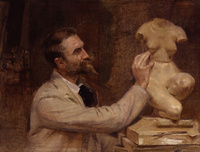 Ford, Edward Onslow British sculptor in the late nineteenth century. Some of his notable colonial works include the statue of Chamarajendra Wadiyar X in Mysore, India, the statue of Lakshmeshwar Singh in Kolkata, India, and two statues of Charles Gordon, one of which was sent to Khartoum, Sudan but later repatriated to the UK.
Ford, Edward Onslow British sculptor in the late nineteenth century. Some of his notable colonial works include the statue of Chamarajendra Wadiyar X in Mysore, India, the statue of Lakshmeshwar Singh in Kolkata, India, and two statues of Charles Gordon, one of which was sent to Khartoum, Sudan but later repatriated to the UK. -
Forster, Frank British sculptor
-
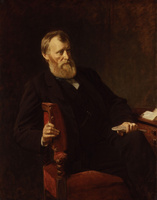 Forster, William Edward Chief Secretary for Ireland (1880-1882).
Forster, William Edward Chief Secretary for Ireland (1880-1882). -
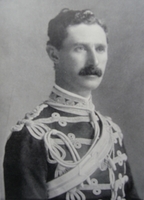 Fortescue, Hugh, 4th Earl Fortescue British politician in the nineteenth and twentieth centuries. Fortescue was Member of Parliament for Tiverton (1881-1885) and Tavistock (1885-1892), as well as Lord Lieutenant of Devon (1904–1928).
Fortescue, Hugh, 4th Earl Fortescue British politician in the nineteenth and twentieth centuries. Fortescue was Member of Parliament for Tiverton (1881-1885) and Tavistock (1885-1892), as well as Lord Lieutenant of Devon (1904–1928). -
 Fortescue, John William Historian of the British Army and brother of Hugh Fortescue, 4th Earl Fortescue (1853-1932)
Fortescue, John William Historian of the British Army and brother of Hugh Fortescue, 4th Earl Fortescue (1853-1932) -
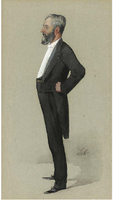 Forwood, Arthur Bower English merchant, shipowner, and politician. Forwood was Member of Parliament for Ormskirk (1885-1898) and Mayor of the Borough of Liverpool (1877-1878). Working with his brother William Bower Forwood (1840-1928), Forwood made much of his wealth from blockade running during the American Civil War (1861-1865) in support of the Confederate States of America , which was fighting to preserve the institution of slavery in the United States.
Forwood, Arthur Bower English merchant, shipowner, and politician. Forwood was Member of Parliament for Ormskirk (1885-1898) and Mayor of the Borough of Liverpool (1877-1878). Working with his brother William Bower Forwood (1840-1928), Forwood made much of his wealth from blockade running during the American Civil War (1861-1865) in support of the Confederate States of America , which was fighting to preserve the institution of slavery in the United States. -
Fountain, Desmond Bermudian sculptor.
-
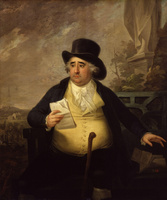 Fox, Charles James British Whig politician and statesman in the late eighteenth and early nineteenth centuries. Fox was Foreign Secretary in 1782, 1783 and 1806. His nephew was the politician and absentee Jamaican slave-owner Henry Vassall-Fox, 3rd Baron Holland (1773-1840).
Fox, Charles James British Whig politician and statesman in the late eighteenth and early nineteenth centuries. Fox was Foreign Secretary in 1782, 1783 and 1806. His nephew was the politician and absentee Jamaican slave-owner Henry Vassall-Fox, 3rd Baron Holland (1773-1840). -
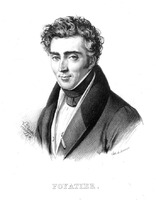 Foyatier, Denis French sculptor active in the nineteenth century.
Foyatier, Denis French sculptor active in the nineteenth century. -
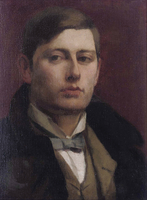 Frampton, George British sculptor in the late nineteenth and early twentieth centuries. Some of his notable colonial works include the statue of Queen Victoria in Kolkata, the statue of Antony MacDonnell in Lucknow, and the memorial to Alfred Lewis Jones in Liverpool.
Frampton, George British sculptor in the late nineteenth and early twentieth centuries. Some of his notable colonial works include the statue of Queen Victoria in Kolkata, the statue of Antony MacDonnell in Lucknow, and the memorial to Alfred Lewis Jones in Liverpool. -
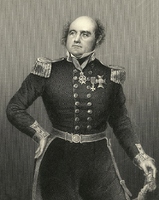 Franklin, John British naval officer, explorer and colonial administrator. Franklin was Lieutenant-Governor of Van Diemen's Land (Tasmania) from 1839 to 1843. Franklin's lost expedition to the Canadian Arctic in 1845 resulted in considerable efforts to try to locate the remains of their two ships, HMS Erebus and HMS Terror, and their crews. In 1854, the Scottish explorer John Rae (1813-1893) collected testimony in from the Inuit people about the fate of the expedition, which included suggestions that some crew members had been forced to resort to cannibalism to survive. The testimony provided by the Inuits was met with considerable racist outcry from sections of Victorian society, including Charles Dickens (1812-1870), which effectively tarnished Rae's reputation.
Franklin, John British naval officer, explorer and colonial administrator. Franklin was Lieutenant-Governor of Van Diemen's Land (Tasmania) from 1839 to 1843. Franklin's lost expedition to the Canadian Arctic in 1845 resulted in considerable efforts to try to locate the remains of their two ships, HMS Erebus and HMS Terror, and their crews. In 1854, the Scottish explorer John Rae (1813-1893) collected testimony in from the Inuit people about the fate of the expedition, which included suggestions that some crew members had been forced to resort to cannibalism to survive. The testimony provided by the Inuits was met with considerable racist outcry from sections of Victorian society, including Charles Dickens (1812-1870), which effectively tarnished Rae's reputation. -
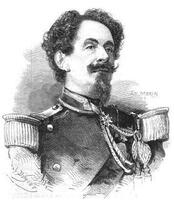 Frebault, Charles-Victor French general, politician, and colonial administrator in the nineteenth centrury. Frebault served twice as Governor of Guadeloupe (1860-1862; 1862-1864).
Frebault, Charles-Victor French general, politician, and colonial administrator in the nineteenth centrury. Frebault served twice as Governor of Guadeloupe (1860-1862; 1862-1864). -
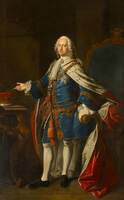 Frederick, Prince of Wales Eldest son and heir apparent of King George II.
Frederick, Prince of Wales Eldest son and heir apparent of King George II. -
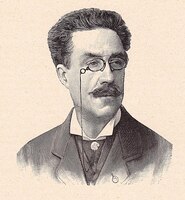 Fremiet, Emmanuel French sculptor in the nineteenth and early twentieth centuries.
Fremiet, Emmanuel French sculptor in the nineteenth and early twentieth centuries. -
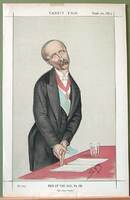 Frere, Henry Bartle British colonial administrator. Frere served as Commissioner of Sind (1851-1859), Governor of Bombay (1862-1867), and High Commissioner for Southern Africa (1877-1880).
Frere, Henry Bartle British colonial administrator. Frere served as Commissioner of Sind (1851-1859), Governor of Bombay (1862-1867), and High Commissioner for Southern Africa (1877-1880). -
Frichet, Fred French sculptor active in the twentieth and twenty-first centuries.
-
Gahagan, Sebastian Irish sculptor in the late eighteenth and early nineteenth centuries. His most notable colonial work is the monument to the slave-owner and colonial administrator Thomas Picton (1758–1815) in St. Paul's Cathedral.
-
 Gainsborough, Thomas English portrait and landscape painter. Gainsborough painted a number of figures with connections to transatlantic slavery and colonialism during the eighteenth century. These include, for example, the absentee slave-owner and MP Charles Tudway (c. 1765) as well as The Byam Family (c.1762–66) and The Baillie Family (c. 1784). In 1768, Gainsborough painted a portrait of Ignatius Sancho, who was a Black British writer, composer, and abolitionist. Gainsborough also painted portraits of Robert Clive, credited with turning the British East India Company into an imperial state in India, and his son, Edward Clive.
Gainsborough, Thomas English portrait and landscape painter. Gainsborough painted a number of figures with connections to transatlantic slavery and colonialism during the eighteenth century. These include, for example, the absentee slave-owner and MP Charles Tudway (c. 1765) as well as The Byam Family (c.1762–66) and The Baillie Family (c. 1784). In 1768, Gainsborough painted a portrait of Ignatius Sancho, who was a Black British writer, composer, and abolitionist. Gainsborough also painted portraits of Robert Clive, credited with turning the British East India Company into an imperial state in India, and his son, Edward Clive. -
Galbusieri, Tranquilo Italian sculptor active in the early twentieth century.